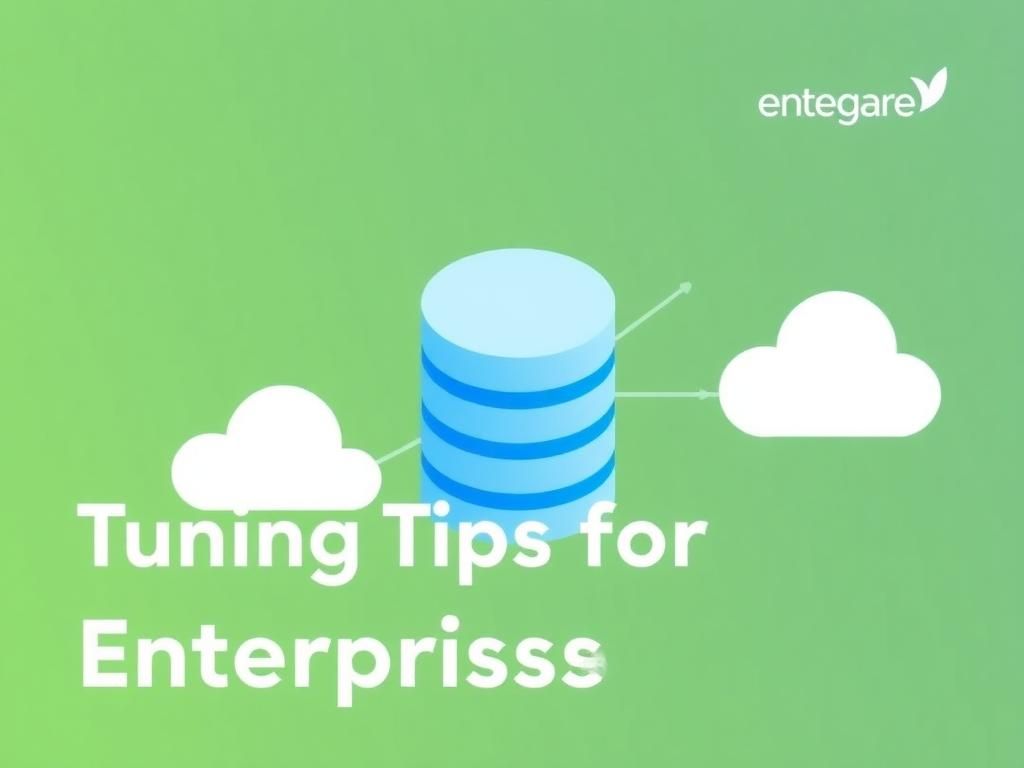Master Database Tuning for Enterprise Success
Unlock the secrets to effective database tuning and boost your enterprise's performance with expert strategies and tips.

In the age of big data and rapid application development, the need for effective database tuning has never been more critical to enterprise success. A well-tuned database can drastically improve performance, enhance user experience, and ultimately drive business growth. This article provides a comprehensive guide to mastering database tuning, covering essential strategies, tools, and best practices that can help enterprises optimize their data management.
Table of Contents
Understanding Database Tuning
Database tuning refers to the process of optimizing database performance and efficiency. This involves adjusting various parameters and configurations within the database management system (DBMS) to ensure that applications run smoothly and data is processed quickly. The goals of database tuning can include:
- Reducing response time for queries
- Improving the overall throughput of the database
- Minimizing resource consumption
- Enhancing reliability and uptime
Types of Database Tuning
There are several types of database tuning that can be performed, each focusing on different aspects of database performance:
- Instance Tuning: This involves configuring the database server settings such as memory allocation, I/O handling, and process management.
- Schema Tuning: Optimizing the database schema by refining tables, indexes, and relationships between entities.
- SQL Query Tuning: Analyzing and optimizing individual SQL queries for better performance.
- Workload Tuning: Adjusting the database to handle specific workloads effectively, including batching and scheduling tasks.
Key Strategies for Effective Database Tuning
To achieve optimal performance, organizations should implement several key strategies:
1. Monitor Database Performance
Continuous monitoring is essential to identify performance bottlenecks. Use tools like:
| Tool | Description |
|---|---|
| Oracle Enterprise Manager | A comprehensive tool for monitoring Oracle databases. |
| SQL Server Management Studio | An integrated environment for managing SQL Server databases. |
| pgAdmin | A web-based administration tool for PostgreSQL databases. |
2. Optimize Indexing
Indexes can greatly enhance query performance. Best practices include:
- Creating indexes on frequently queried columns
- Using composite indexes for multi-column searches
- Regularly reviewing and removing unused indexes
3. Analyze Query Execution Plans
Understanding how a query is executed is crucial for tuning. Use tools provided by your DBMS to view execution plans, which can reveal which parts of the query are consuming the most resources.
4. Partitioning Data
Partitioning can help manage large datasets effectively by breaking them into smaller, more manageable pieces. By partitioning tables, queries can be executed more efficiently.
The Role of Hardware in Database Performance
While software optimizations are vital, hardware resources also play a significant role in database performance. Consider the following aspects:
1. Memory (RAM)
More memory allows for larger database caches, which can significantly reduce disk I/O operations. It is essential to ensure that the database server has adequate RAM to manage the workload effectively.
2. CPU Power
A powerful CPU can execute complex queries more quickly. When choosing hardware, focus on the number of cores and clock speed.
3. Storage Solutions
Fast storage systems, particularly Solid-State Drives (SSDs), can provide faster data access compared to traditional Hard Disk Drives (HDDs). Consider using RAID configurations for improved performance and redundancy.
Database Maintenance Best Practices
Regular maintenance is crucial for ensuring ongoing database performance. Key practices include:
- Regular Backups: Ensure robust backup procedures to protect against data loss.
- Index Maintenance: Rebuild or reorganize indexes periodically to optimize performance.
- Statistics Updates: Keep database statistics up to date for the query optimizer to make informed decisions.
Automating Database Maintenance
Consider using automated tools to handle routine maintenance tasks. This can reduce the administrative burden and ensure that necessary tasks are performed consistently.
Emerging Trends in Database Tuning
The landscape of database management is continually evolving. Some emerging trends include:
1. Cloud Databases
As enterprises move to the cloud, understanding how to tune cloud-based databases becomes essential. Cloud providers often offer built-in optimization features that can be leveraged.
2. Machine Learning for Tuning
Machine learning algorithms can analyze historical performance data to recommend optimal configurations and automatically adjust settings as workloads change.
3. NoSQL Databases
For specific use cases, NoSQL databases like MongoDB and Cassandra are gaining traction. Understanding the tuning mechanisms specific to these systems is essential for optimization.
Conclusion
Mastering database tuning is an essential skill for any enterprise aiming to leverage data for competitive advantage. By implementing effective strategies, monitoring performance, and staying abreast of emerging trends, organizations can optimize their databases to meet the demands of today’s fast-paced digital landscape. Continuous learning and adaptation are key as technology evolves, but the fundamental principles of database tuning will remain crucial to enterprise success.
FAQ
What is database tuning and why is it important for enterprises?
Database tuning refers to the process of optimizing database performance by adjusting configuration settings and queries to ensure efficient data retrieval and processing. It is crucial for enterprises to enhance application performance, reduce latency, and improve user experience.
How can I identify performance bottlenecks in my database?
You can identify performance bottlenecks by monitoring query execution times, analyzing database logs, and using performance profiling tools to assess resource usage and identify slow queries or locking issues.
What are some common database tuning techniques?
Common database tuning techniques include optimizing SQL queries, indexing frequently accessed columns, adjusting memory allocation, and partitioning large tables to improve data access and management.
How often should I perform database tuning?
Database tuning should be performed regularly, especially after significant changes in data volume, application updates, or when experiencing performance issues. A proactive approach helps maintain optimal performance.
What tools can assist in database tuning?
There are several tools available for database tuning, including SQL profiling tools, performance monitoring software, and database management systems that offer built-in tuning advisors to help optimize performance.
Can database tuning improve application scalability?
Yes, effective database tuning can significantly enhance application scalability by ensuring that the database can handle increased loads efficiently, thus supporting business growth without compromising performance.


